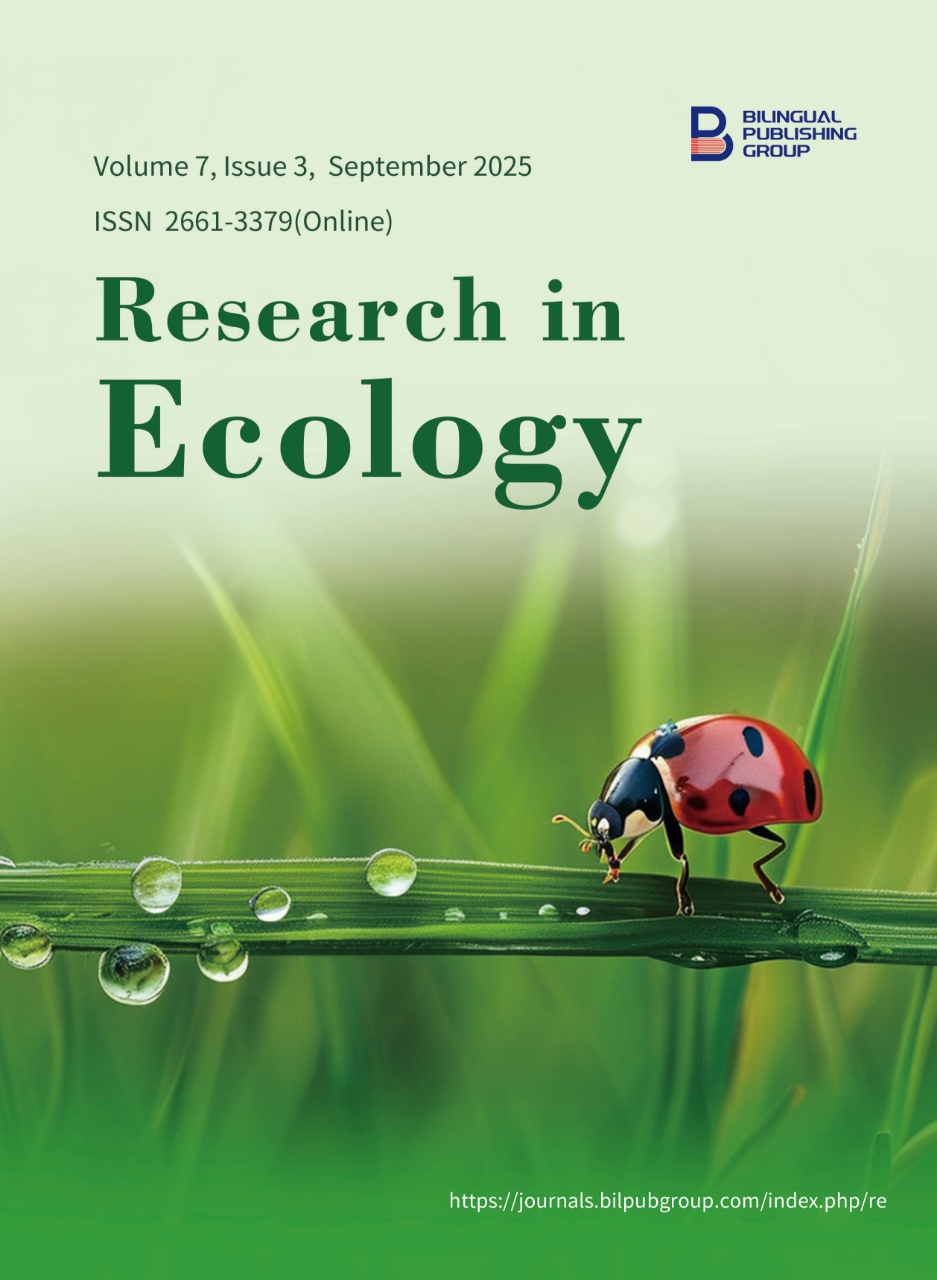
Biochar of Reed (Phragmites autralis) on Representative Locations in Mekong Delta of Vietnam
DOI:
https://doi.org/10.30564/re.v7i3.10149Abstract
A new renewable material by use reed biochar (Phragmites autralis); a species strong grows and very high biomass, it can be exploit a renewable resources for agriculture and environmental treatment. People often used rice husks as materials for organic fertilizers in agriculture. This study is a new discovere to made of reed biochar to filter N, P, K of chemical mineral fertilizer and pig urine use to provide bio-organic fertilizer for rice plant (ST 25). Methods: (1) Made of biochar by use the local method; (2) analyse the chemical indicators of locations on trunks, leaves, flowers; (3) identify chemical indicators of peatland on locations of experiment; (4) adsorpting chemical fertilizer (nitrogen, phosphorus and potash), pig urine filter by reed biochar, analize its chemical indicators; (5) use fomulas of reed plant biochar mixed peat and mineral inorganic fertilizer. Results: Made of reed biochar and it can adsorpted as ammonium, nitrate, nitrogen, phosphorus and kalium the pig urine and it also adsorpted inorganic fertilizer as nitrogen, phosphorus and Kalium. Thus it used for environmental treatment in the region polluted and planting local rice ST 25 in the experiment area. Conclusion: Biochar of reed can use to environment treatment and agriculture fertilizer; chemical indicators of bichar indentified; the mixed biochar, peat and inorganic in formulas in 5 days and 10 days were not differences; biochar can adsorb some chemical components of pig urine and nitrogen, phosphorus and kalium; biochar can mixed peat and inorganic mineral to planting rice ST 25 in Mekong Delta.
Keywords:
Biomass of Reed; Reed Plant Biochar; Phragmites australis; Rice ST 25References
[1] Van Dam, X., 2007. Research on the distribution, growth and development of (Phragmites autralis) on ore mining land in Thai Nguyen province. Science and Technology Journal of Vietnam. 7(107), 91–97.
[2] Vietnam Nature Conservation Center., 2004. U Minh Thuong National Park. In Information Book on Existing and Proposed Protected Areas in Vietnam; Vietnam Nature Conservation Center: Hanoi, Vietnam.
[3] Obreja, C.D., Buruiana, D.L., Mereuta, E., et al., 2023. Detection of reed using cnn method and analysis of the dry reed (phragmites australis) for a sustainable lake area. Plant Methods. 19, 61. DOI: https://doi.org/10.1186/s13007-023-01042-w.
[4] Mai, V.T., Tran, V.C., Vu, D.Q., et al., 2011. Research on biochar production from rice straw and rice husk to improve soil fertility, crop productivity and reduce greenhouse emissions.. Sciences and Technology journal off Vietnam. 3(24), 1–5.
[5] Nguyen, H.S., Nguyen, T.N.T., 2015. Research on the posibility of using boichar to replace manure and inorganic fertilizers in rice production. Vietnam Journal of Agricultural Science abd Technology. 1(55), 66–74.
[6] Nguyen, D.N., 2014. The role of Biochar in efective biochar production and application. Department and Technology. Ho Chi Minh City. City level Project summary report. pp. 1–32.
[7] Kystian, O., Agnieszka, S., Anana, K.K., 2007. Chemical omposition of Reed Phragmites autralis (Cav.) Trin. Ex. Steud. Verus Density and Structure of Periphyton in Various Aquatic Ecostems. Journal of Elementology. 12(1), 63–79.
[8] Shila, K.S., Abdolamir, M., Mojtaba, N.M., et al., 2019. Study of Amonium and Nitrate Adsorption Kimeties and Isotherm by Common reed (Phagmites australis) biochar from Aqueous Sotution (in Persian). Magiran. 50(8), 2009–2021.
[9] UMTNP, 2022. Investigation Report on Peatland of U Minh Thương National Park 2022; UMTNP: Kuantan, Malaysia.
[10] Nguyen, N.N., 2015. Land Evaluation Curiculum. University of Agroforestry in Ho Chi Minh City. Available from: http://mysite.tufa.edu.vn
[11] De, V.B., Lettens, S., Muys, B., et al., 2007. Walkley–Black analysis of forest soil organic carbon: Recovery, limitations and uncertainty. Soil Use Management. 23, 221–229.
[12] Bao, H., 2009. Statistics in Forestry. Apply Software Stagraphics Centurion and MS; Tay Nguyen University: Buon Ma Thuot, Vietnam.
[13] Bao, H., 2007. Statistical analysis in experimental forestry research. Book of Tay Nguyen University: Buon Me Thuot, Vietnam.
[14] Hao, Z., Wang, Z.Y., Deng, X., et al., 2012. Characteristics and nutrient values of biochars produced from gaint at different temperatures. Bioresource Technology.130, 463–471. DOI: https://doi.org/10.1016/j.biortech.2012.12.044
[15] Luom, T.T., Ngoc, T.H.D., Thien, V.N., et al., 2025. Research on Biomass and Biochar of Reed (Phragmites australis) in U Minh Thuong National Park, Vietnam. Journal of Environmental & Earth Sciences. 7(5), 274–288. https://doi.org/10.30564/jees.v7i5.7211
[16] Asaad, A.A., El-Hawary, A.M., Abbas, M.H.H., et al., 2022. Reclamation of wastewater in wetlands using reed plants and biochar. Science Report. 12, 19516. DOI: https://doi.org/10.1038/s41598-022-24078-9
[17] Hou, J., Huang, L., Yang, Z.M., et al., 2016. Adsorption of ammonium on biochar prepared from giant reed. Environmental Science and Pollution Research. 23(19). DOI: https://doi.org/10.1007/s11356-016-7084-4
[18] Qi, Y.R., Zhong, Y.X., Luo, L.L., et al., 2023. Preparation of Reed Biochar and Study on Its Phosphorus Adsorption Characteristics. Journal of Environmental Engineering. 149(8).
[19] Zhao, Y.Q., Huang, L., Chen, Y.C., 2017. Biochar dirived from gaint reed (Arundo donax L.) with different treatment: characterization and ammonium adsorption potential. Environmental Science and Polltion Research. 24, 25889–25898.
[20] Zang, M., San, R.Y., Song, G., et al., 2022. Enhanced removal of ammonium from water using sulfonated reed waste biochar-A lab-scale investigation. Environmental Pollution. 292, 118412. DOI: https://doi.org/10.1016/j.envpol.2021.118412
[21] Doan, T.T., 2020. Results of trial production of ST 25 rice variety in Nghe An in the winter – spring crop of 2020. The Journal of Science and Technology of Nghe An, Vietnam. 7.
[22] Attila, I.E., 2009. Structure, Growth Dynamics and Biomass of Reed (Phragmites autralis) – a Review. Hungarian Academy of Sciences. 204(5), 331-346. DOI: https://doi.org/10.1016/j.flora.2008.05.001
[23] Wu, C.H, Wang, M., Wang, C., et al., 2023. Reed biochar improved the soil funtioning and bacterial interactions: A bagging experiment using the plantation forest soil (Fraxinus chinensis) in the Xiong'an new area, China. Journal of Ceaner Production. 410, 137316. DOI: https://doi.org/10.1016/j.jclepro.2023.137316
[24] Wang, Y.Z., Zhang, Y.P, Zhao, H., et al., 2022. The effectiveness of reed biochar in mitigating phosphorus loses and enhangcing microbially driven phosphorus dynamics in paddy soil. Journal of Environmental Management. 314(1-2), 115087. DOI: https://doi.org/10.1016/j.jenvman.2022.115087
[25] Lada, M., Seelawut, D., 2018. Low cost and easy rice husk modification to efficiently enhance ammonium and nitrate adsorption. International Journal of Recycling of Organic Waste Agriculture. 7, 143–151. DOI: https://doi.org/10.1007/s40093-018-0200-3
[26] Axel, K., Pinthira, F., 2021. Blue Growth: Applications and properties of biochar made out of reed. Thesis of University, KTH Royal Institute of Technology. School of Architecture and Built Environment (ABE), Sustainable development, Environmental science and Engineering. Stockholm, Sweden.
[27] Dang, T.D., Do, T.H., Pham, T.D., 2019. Reasearch on watermelon cultivation methods in Thai Binh provice. Vietnam Agricultural Science and Technology Journal. 12 (9).
Downloads
How to Cite
Issue
Article Type
License
Copyright © 2025 Mo Danh, Luom Thanh Thai, Ngoc Thi Hong Dang, Thien Van Ngo, Maja Flörke-Staats

This is an open access article under the Creative Commons Attribution-NonCommercial 4.0 International (CC BY-NC 4.0) License.




 Mo Danh
Mo Danh






